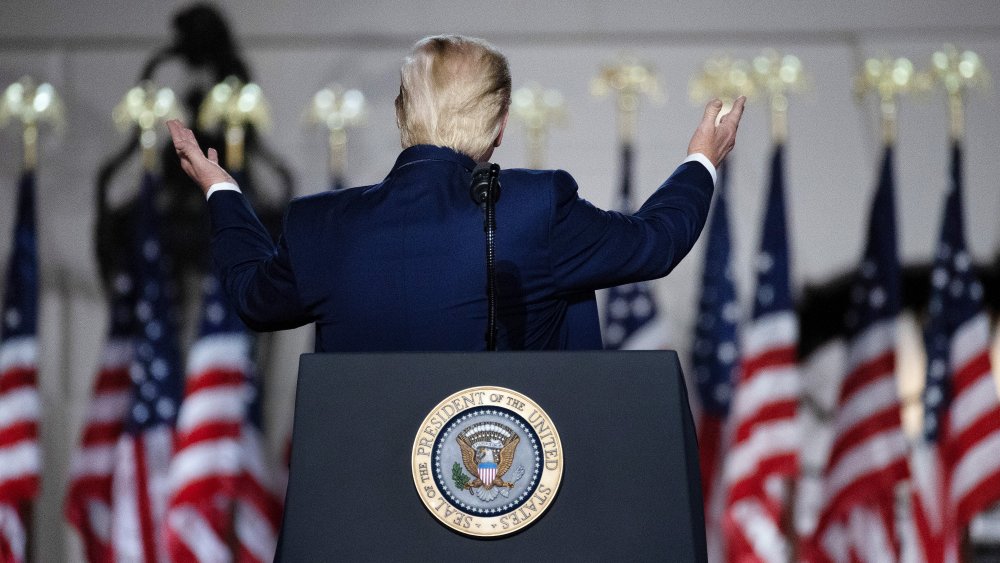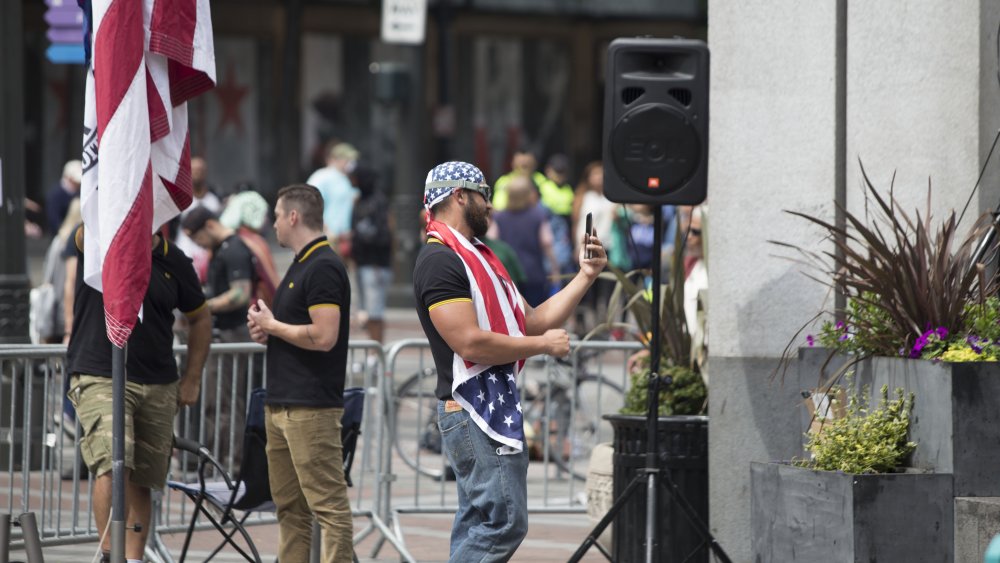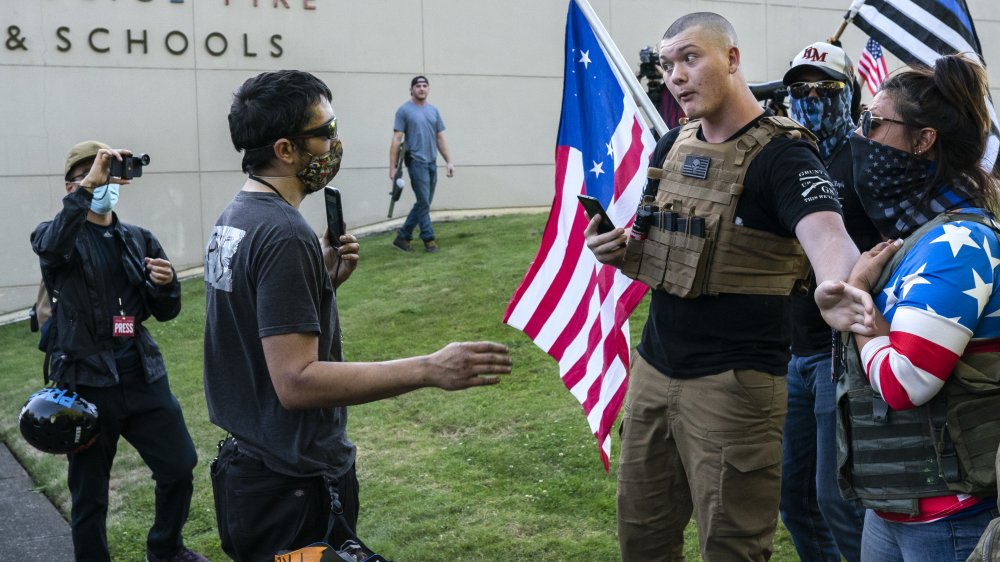The Tragic True Story Of 'Ax Handle Saturday'
The timing of Donald Trump delivering his acceptance speech for the Republican National Convention in Jacksonville, Florida on the 27th of August was not lost on observers. As the nation still rocks with protests against the racism of police brutality and Trump's general support of both the police and white nationalist militia, he chose to speak on the sixtieth anniversary of Jacksonville's Ax Handle Saturday or the Jacksonville Riot of 1960, a racist attack against civil rights protestors.
However, The Daily Beast reported in June, a permit to gather at Hemming Park, the meeting spot for the Klansmen, was also secured on the 27th by a protest led by Rodney Hurst and Alton Yates, the 16-year-old president of the youth council of the NAACP in 1960 and 23-year-old vice president respectively. Both participated at the protests targeted by the KKK who, according to an FBI informant, hoped the provocation would result in a race war. The former had been part of the NAACP for five years by that point while the latter was spurred to action during a drive back from a New Mexican air base which saw him barred from sandwich shops and restrooms.
So they began a series of sit ins at Woolworth's lunch counter on August 13. The purpose, as stated on the Ax Handle Saturday's commemorative website was "to dramatize our opposition to segregation and Racism and for our Human Dignity and Respect." Despite the verbal and physical abuse, the sit ins continued for two weeks.
Retaliation
Similar to how reactionary militias descended upon the continued protests in Portland, the daily sit ins drew the ire of the white population in Jacksonville. At first it was "contained" to being kicked and stuck with pins as they left and in one case, a woman grinding her shoe's heel into Hurst's toe.
However, on the 27th, as they passed Hemming Park, the protesters noticed something different. "There were two trucks in front," Yates recalled thirty years later. "And there were a large number of mainly middle-aged, elderly white men surrounding those trucks and someone on each of those trucks stood up there and was passing out ax handles and baseball bats to the men, who had assembled around the park." So they went back, alerted the police department, and proceeded to demonstrate.
They arrived at the counter. They sat down. Upon settling, white people came and began to beat them with baseball bats and the eponymous ax handles. "'You might wonder where the police were. The Florida Historical Society numbers them at 200. Where were the police? "They were there," Yates insisted, "but it appeared as though they were there to protect the people who were beating us." The protesters fled, but fortunately a local Black gang called the Boomerangs stepped in, stopping the attack from reaching its worst potential. Their intervention, however, brought in the police, who wanted to stop the Boomerangs. They arrested the Boomerangs and others who had assisted the fleeing protesters.
Aftermath
After the riot, the NAACP continued to organize sit ins. The violence never reached the same pitch. Shop owners instead would douse a sandwich with pepper or tamper with the food in other ways to try and provoke the protesters to not pay for the food they ordered, thus giving them an excuse for their arrest. However, they persevered, returning and returning until, as Yates put it, "finally it became too costly for the ownership of Woolworth's, and they decided to serve us.”
Obviously, things have changed but a very similar dynamic is a play today. Indeed, as Brandon Tensely notes for CNN, Trump's choice to hold a rally in Tulsa, the site of the Tulsa race massacre, on Juneteenth as well as coming to Jacksonville on the anniversary of Ax Handle Saturday during this unrest proves the same systemic logic is at play. But, in The Daily Beast article, Yates is cautiously hopeful. Even though the death of George Floyd shows how far the country is from any semblance of true equality, the newfound diversity in the body of protesters raises his spirits: "When we were protesting in the 1960s, we had one white student who demonstrated with us, and that was a rarity... [Today, however, the] demonstrators look like America and that's important. As a result of that, I think you will begin to see change happen as never before."


